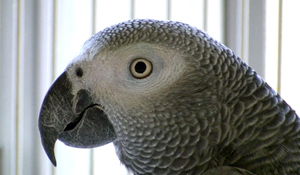Contents
Support the Grey Parrot Anatomy Project
Donate Now to the Grey Parrot Anatomy Project and Lafeber Company will make a matching donation to this worthy cause.
To make a donation: Follow the links to the Tracy Aviary donation page and write ‘Lafeber match’ into the Tribute information section.
What is the Grey Parrot Anatomy Project?
The Grey Parrot Anatomy Project aims to create an accurate physical and digital anatomy reference, including a standardized basis for avian anatomy nomenclature, of the African grey parrot (Psittacus erithacus erithacus). A detailed description of anatomy can provide clinicians and researchers vital information for the diagnosis and treatment of diseases for all parrot species. Although long used for humans and selected animals, such anatomic references for commonly kept parrot species currently do not exist.
Did you miss the free Grey Parrot Anatomy Project web-based seminar?
View a recording of the 1-hour webinar presented on October 5, 2014 by Dr. M. Scott Echols and hosted by Lafeber Company:







Fascinating. But how do I increase bone density in my CAG who will only walk across the floor and not fly anywhere? I assume exercise has an effect.
It is my firm believe that every bird hatched in captivity should be fledged and allowed to fly until skilled and competent in turning, landing and decision making. This, to me, is the best possible start to providing for life-long health (along with balanced diet and outside sunshine opportunities). Even if the bird must be clipped because of living conditions (usually children who can be lax about closing doors), the clip should be carefully done to allow the bird to escape danger if necessary and to not fall. Would you say something about fledging?
A: Karen, studies in multiple species of animals (mammals and birds) support that the developmental period up to, and sometimes into early, adulthood strongly affects several health parameters later in life. These parameters include mental and physical health. I do agree that allowing a fledgling to develop flight skills at an early age can benefit the bird as an adult- even if trimmed. This also goes for early socialization. Again multiple studies show that young well socialized (social) species tend to handle stressors better as adults than their poorly socialized counterparts.
M. Scott Echols, DVM, Diplomate ABVP- Avian Practice
Mobile Avian Surgical Services
The Medical Center for Birds
925-625-1878 office
http://www.medicalcenterforbirds.com